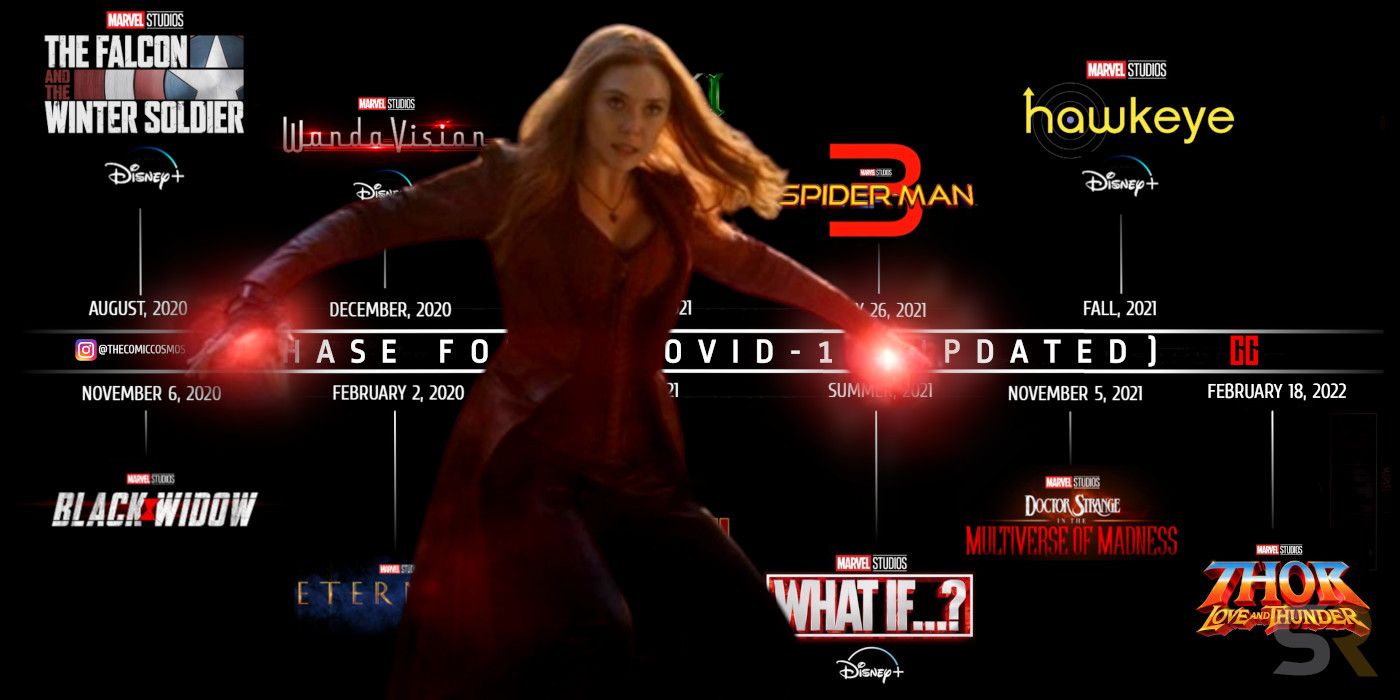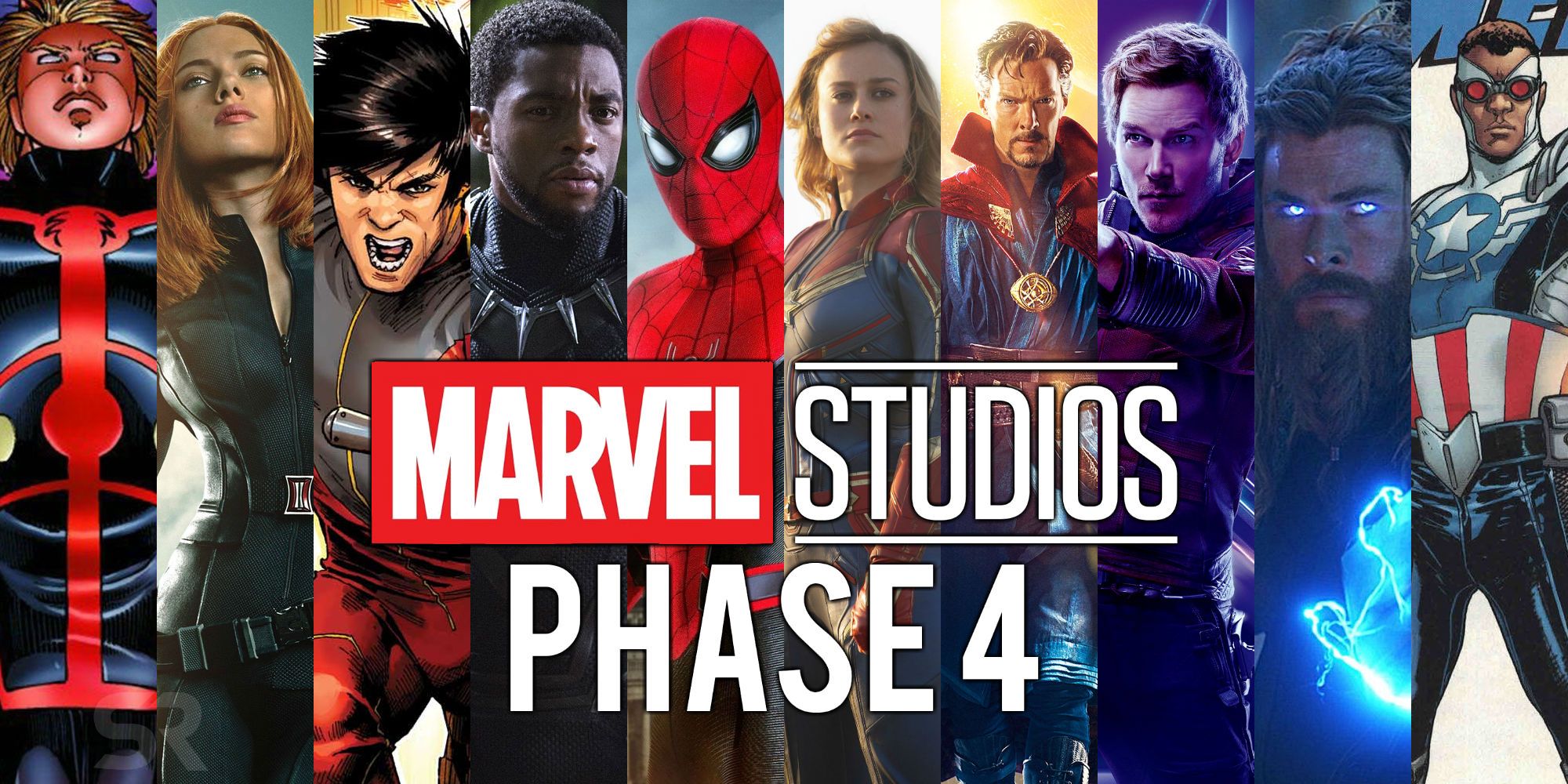
Kevin Feige says that MCU Phases will continue to be used as a format to group content, even as the amount of content for each phase balloons. Marvel is officially kicking off their largest phase yet at the end of this week when WandaVision premieres on Disney+. That series will be the first of Marvel's original shows set within the MCU, of which there are several that will release this year. Most of them are centered around main characters from past Phases, including Loki, Hawkeye, and The Falcon and the Winter Soldier.
They will, however, be slowly introducing new characters that will be integral to the future of the MCU, both on Disney+ and in theaters. Marvel will release more content in 2021 than ever before, including four films and six Disney+ series. Black Widow will be the first theatrical release of Phase 4, followed by Shang-Chi and the Legend of the Ten Rings, Eternals, and Spider-Man 3. The release schedule will see Marvel dominate screens nearly every week of the year after 2020 saw the studio release no new content.
Feige has addressed oversaturation concerns, defending the studio's plan going forward. That plan, Feige says, will still include the Phases that fans have come to know and love. Feige says that that format helps the studio internally in that they are able to develop a story arc within those specific phases. Feige says it takes years to plan and implement each individual phase and that Phase 4 is no different, except for the massive amount of content being released.
Screen Rant: Is the MCU still organized, going forward into the future, in phases?
Kevin Feige: So far, we announced much of Phase 4 a year and a half ago at Comic-Con, and that's what we've been [doing]. I think there's a sense of, when we announce a lot of things, people start going, "Okay, what's next, then?" Well, once we now announce something, we have to then go do it. We have to then go make it. And that's very much what we've been doing for that last year and a half, and we'll be doing for the next year and a half or two.
As the phases have expanded, certainly Phase 4 is bigger than any of the other ones. The number of years that it takes to complete a phase is essentially the same, between 3 to 4 years or so. The number of projects in those phases is growing, thanks to Disney Plus. So, that's where we're heading into this year, to see how audiences attract and follow along - or don't. Because believe it or not, there are people that just pop in, enjoy a movie or show, and pop out. And we make our shows and movies for them as well.
But [phases building to overarching sagas] seem like a nice - at least internally, for us the Marvel Studios - way to build stories for us.

With Phase 4 being larger than ever before, it's safe to say that this upcoming phase has been meticulously planned out. While Feige cites the helpfulness of phases when it comes to internal structuring, it's also clearly helpful for fans, too. By clearly designating phases, Marvel gives fans a clear idea of when a story will come to an end. It also gives them a hint as to when they will see all the stories that are being told come together in spectacular fashion, as they did in 2019's Avengers: Endgame.
The massive amount of content in Phase 4 also has its advantages. Phase 4 will essentially give fans three Avengers-esque movies, with Spider-Man 3, Doctor Strange in the Multiverse of Madness, and Thor: Love and Thunder bringing massive amounts of heroes together. That's not even including the eventual culmination of all of Phase 4's storytelling. There's no way of knowing, at this point, when that will all come together, but when it does, it is sure to be massive. Feige has refused to say just when Phase 4 will end and the MCU made Avengers: Endgame seem almost impossible to top, but if Phase 4's early plans are any indication, Feige might just be able to pull it off.
from ScreenRant - Feed https://ift.tt/2LrP5AR

0 Comments